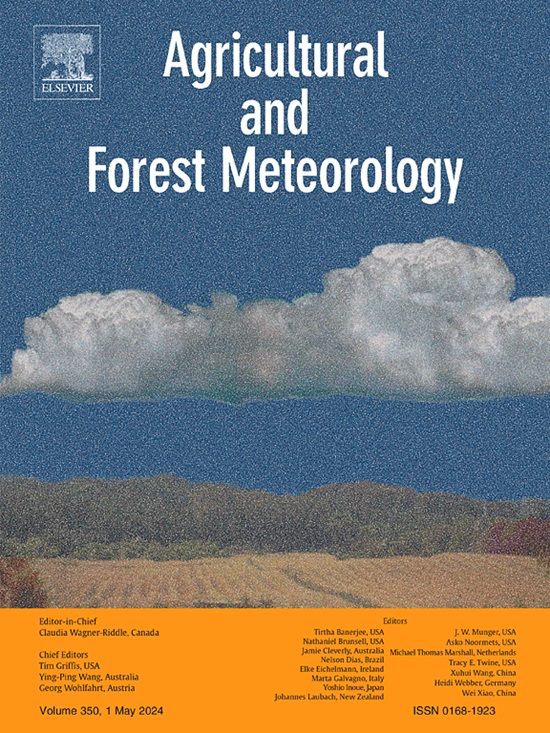用视频测量树木摇摆频率用于生态水文应用:评估欧拉处理算法的有效性
IF 5.7
1区 农林科学
Q1 AGRONOMY
引用次数: 0
摘要
树木摇摆频率的测量可用于量化重要的生态水文过程,如干旱胁迫和树冠截流,否则需要昂贵的测量技术。然而,现有的测量树木摇摆的仪器缺乏空间可扩展性。我们研究了虚拟视觉传感器和多级二值阈值视频处理算法是否可以用于准确提取摄像机视场中多个点的树木摆动频率,以实现生态水文过程的可扩展测量。对比三个站点的视频和加速度计数据提取的摆动频率,我们发现对于30-60秒的视频,视频处理算法可以以±0.02 Hz的精度再现30分钟的加速度计摆动频率。结果表明,视频处理算法可能适用于摇摆频率变化在十分之一赫兹或更大数量级的应用,例如测量树冠中拦截的雪。需要进一步的工作来澄清算法在应用于较长的视频时的准确性,这可能需要监测导致更细微的摆动频率变化的过程,例如树木含水量的日变化和干旱胁迫的影响。本文章由计算机程序翻译,如有差异,请以英文原文为准。
Measuring tree sway frequency with videos for ecohydrologic applications: Assessing the efficacy of Eulerian processing algorithms
Measurements of tree sway frequency can be used to quantify important ecohydrologic processes, such as drought stress and canopy interception, that otherwise require expensive measurement techniques. However, existing instruments used to measure tree sway lack spatial scalability. We investigate whether the virtual vision sensor and multilevel binary thresholding video processing algorithms can be used to accurately extract tree sway frequency at multiple points in a video camera field of view to enable scalable measurements of ecohydrologic processes. Comparing sway frequencies extracted from video and accelerometer data at three sites, we show that for 30–60 second videos, the video processing algorithms can reproduce 30-minute accelerometer sway frequencies with ±0.02 Hz accuracy. The results suggest that video processing algorithms may be suitable for applications where changes in sway frequency are on the order of tenths of hertz or larger, for example the measurement of snow intercepted in tree canopies. Further work is needed to clarify the accuracy of the algorithms when applied to longer videos, which may be required to monitor processes that result in more subtle changes in sway frequency, such as diurnal changes in tree water content and impacts from drought stress.
求助全文
通过发布文献求助,成功后即可免费获取论文全文。
去求助
来源期刊
CiteScore
10.30
自引率
9.70%
发文量
415
审稿时长
69 days
期刊介绍:
Agricultural and Forest Meteorology is an international journal for the publication of original articles and reviews on the inter-relationship between meteorology, agriculture, forestry, and natural ecosystems. Emphasis is on basic and applied scientific research relevant to practical problems in the field of plant and soil sciences, ecology and biogeochemistry as affected by weather as well as climate variability and change. Theoretical models should be tested against experimental data. Articles must appeal to an international audience. Special issues devoted to single topics are also published.
Typical topics include canopy micrometeorology (e.g. canopy radiation transfer, turbulence near the ground, evapotranspiration, energy balance, fluxes of trace gases), micrometeorological instrumentation (e.g., sensors for trace gases, flux measurement instruments, radiation measurement techniques), aerobiology (e.g. the dispersion of pollen, spores, insects and pesticides), biometeorology (e.g. the effect of weather and climate on plant distribution, crop yield, water-use efficiency, and plant phenology), forest-fire/weather interactions, and feedbacks from vegetation to weather and the climate system.

 求助内容:
求助内容: 应助结果提醒方式:
应助结果提醒方式:


